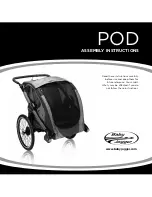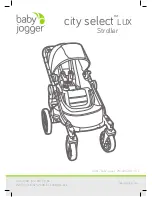
ERT-A2 ALERT2 Configuration Manual
Revision 1.0
16
System Design
Unit type overview
The ERT-A2 unit can be configured through the menu to support three different unit types:
-
Field Station:
Very low power consumption unit which is in a sleep mode most of the time
monitoring its sensor inputs and wakes to send data frames when events occur or on
periodic update messages.
-
Repeater:
Low power unit that that has its receiver powered to allow radio messages to be
received and then re-transmitted and can also have sensor inputs connected which can be
transmitted on event or periodic update messages. This unit can be configured to accept
ALERT2 binary data frames on its RS485 port to retransmit on the radio.
-
Base Receiver:
This unit will receive radio messages and forward these messages to its RS-
485 port which in a normal system is connected to the 115E-2-A2 decoder-gateway. The
receiver is usually located close the Antenna and decoder-gateway is usually located
remotely in server room or office where there is a network connection point. The base
receiver also has sensor inputs which can be used to collect input values and transmit on
events or periodic updates over the RS-485 interface.
For more complex systems or where there is a need to bring in remote station data on different
frequencies or legacy ALERT1, Field Station, Repeater and Receiver units can be linked via serial
to provide several very useful network consolidation tools.
Common Complex repeaters options:
-
High Capacity ALERT2 or legacy ALERT1 repeater:
In larger systems the network trunk or
backbone can become very busy with field data messages and the capacity of these
backbones can be increase twofold by use of a second radio frequency for this backbone. A
high capacity repeater is enabled through the linking of a Receiver (frequency F1) and a
transmitter (Frequency F2) via a serial link using two antennas.
Field Station
Field station units are the most commonly used configuration.
Field station type is setup by selecting this option in the
communications menu.
Field stations support a wide range of sensor input types
including discrete inputs which can be ON/OFF or pulsed types,
4-20mA analog inputs and smart sensors using SDI-12.
The field station supports both ALERT2 or ALERT1 protocol
modes and the protocol can be configured in the
communications setting of the unit.
A typical field station used in a flood warning application would usually require the following basic
measurements:
-
Rain fall: pulsed input discrete with tipping bucket rain gauge
-
River height: Either 4-20mA analog input or SDI-12 smart sensor
-
Battery Voltage: Voltage of internal or external battery in Vdc
Содержание ERRTS ALERT2
Страница 1: ...Revision 0 5 ERT A2 Configuration Manual ...
















































